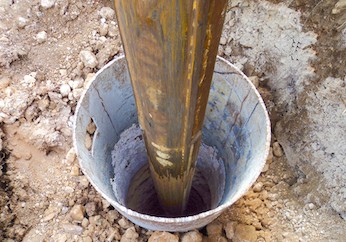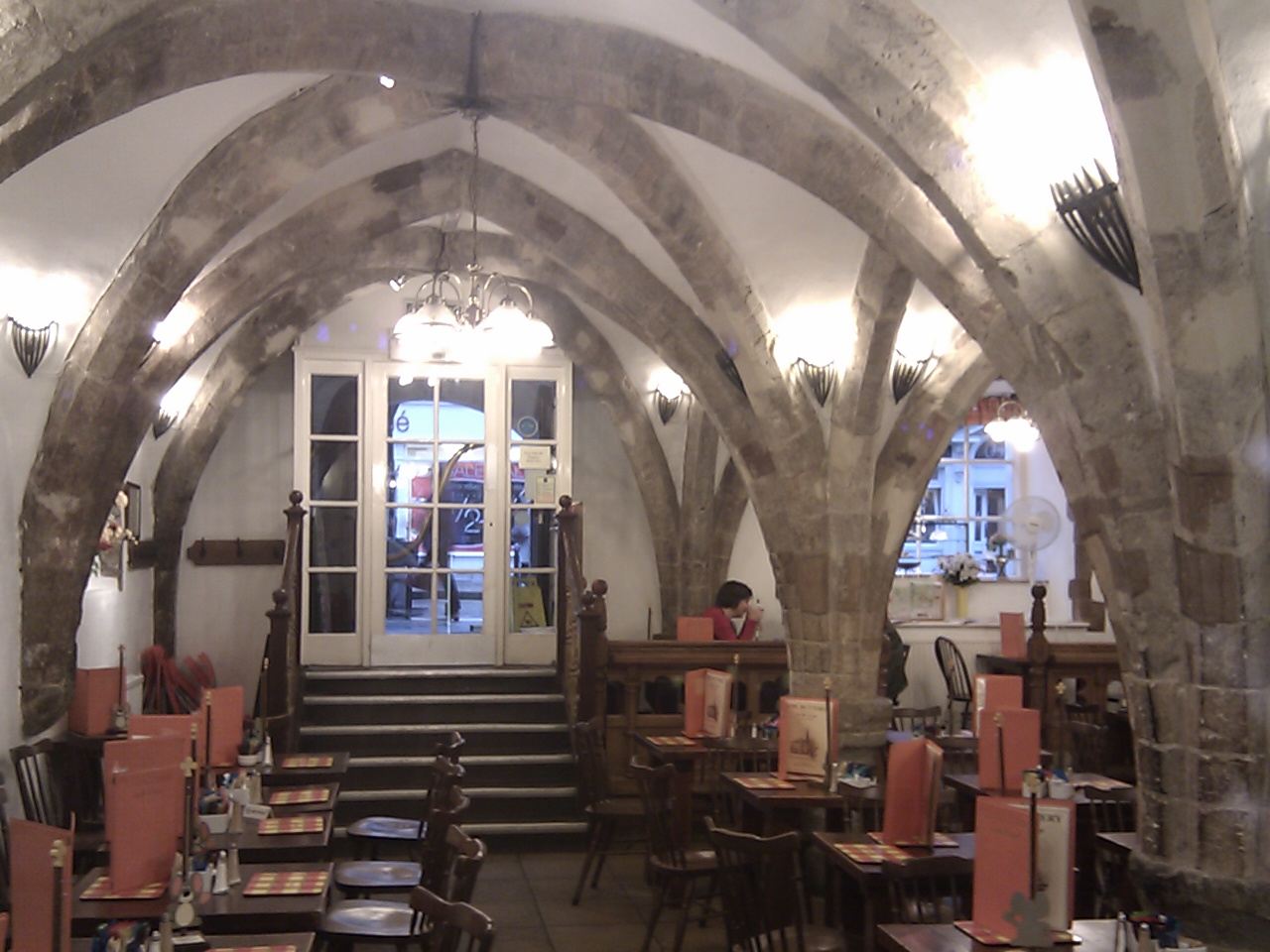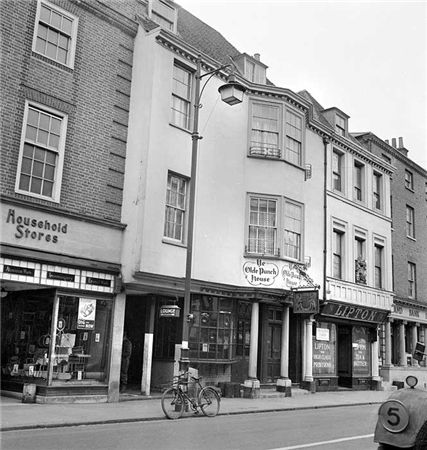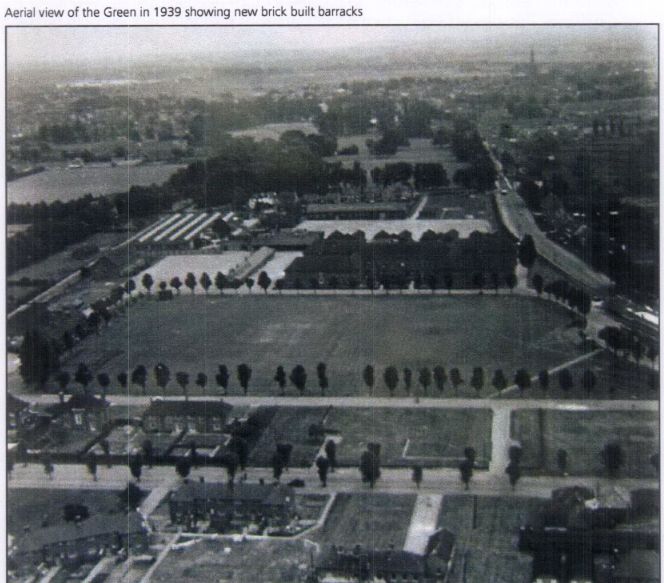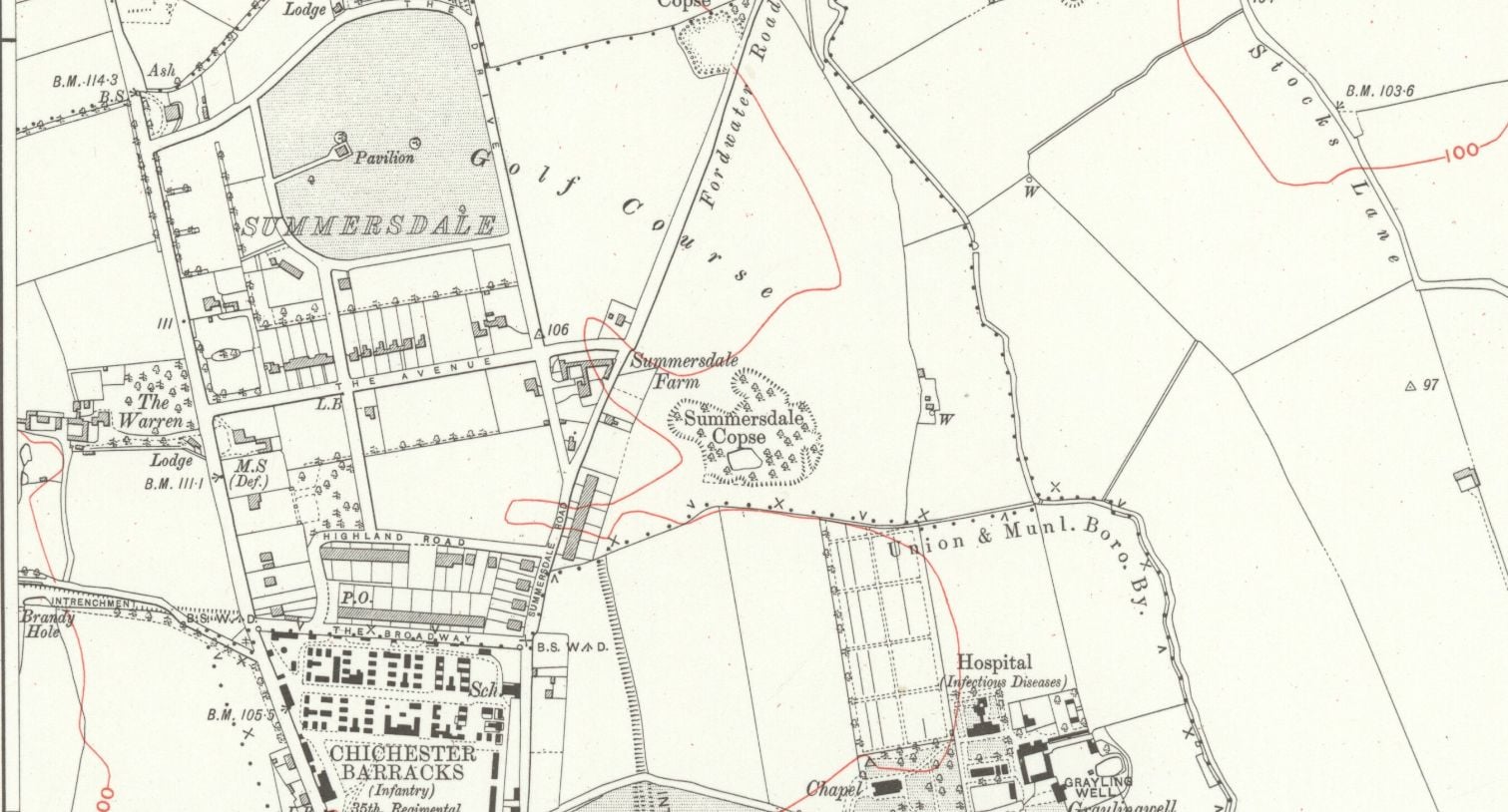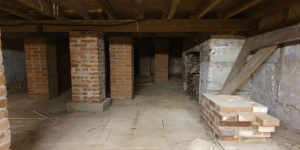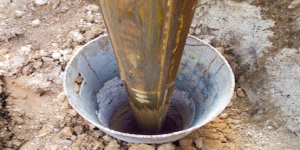'
Summersdale is an attractive area in the north of Chichester. Spacious
and leafy, the character of the area is now under threat with many houses
on large plots at risk of demolition and re-development. It is an historic
suburb with high quality architecture in street scenes that are worthy of
enlightened protection.
This Appraisal, written in conjunction with the Chichester City Planning &
Conservation Committee, was limited to the oldest properties and roads in
the suburb. It describes the history and distinctive visual character of the
neighbourhood, and provides a framework for limited and sensitive
development, while protecting the long established character and heritage
of the area.
A case is made for either an appropriate Conservation policy, or a
comprehensive Local Listing of buildings ‘the character and appearance of
which it is desirable to preserve or enhance’ (PPG15).
It also makes a strong case against demolition, and puts quality well
before quantity in any re-development. There are no current opportunities
for large scale development in the prescribed area and few, if any, for
appropriate infill re-development. The area needs no re-generation per se,
and the local demand for other than established family homes should be
easily absorbed by the large residential developments nearby at
Graylingwell Hospital and the Roussillon Barracks.
***
This appraisal was adopted by Chichester City Council at its meeting on 9
July 2008, and will now go forward as an Annexe to the Chichester Town
Plan Document adopted by the City Council on 7 September 2005.
Summersdale Neighbourhood Character Appraisal
Objectives
Summersdale is a very attractive area of northern Chichester,
immediately north of the City’s Conservation Area. its early buildings are
of late Victorian origin but Edwardian-style architecture and features.
Spacious and leafy, the character of the area is now under threat with
many of the houses, on plots large by today’s standards, at risk of
demolition and re-development. It is an historic suburb, with a coherence
and identity worthy of respect and enlightened protection. It has proved
to be a sustainable and pleasant place in which to live.
The historic core of the suburb, and the focus of this Appraisal, consists of
the four roads in the original Summersdale Estate, The Avenue, Highland
Road, The Broadway and Summersdale Road, together with The Drive,
Lavant Road, Rew Lane and Brandy Hole Lane. in general, the Appraisal
will only concern developments prior to 1970.
To guide future planning applications, the Appraisal sets out the type and
form of development that might be considered acceptable on individual
sites. It has three objectives:
* To describe the distinctive visual character of the neighbourhood, its
surrounding setting and the elements that comprise its built form
and open spaces.
To inform and involve the local community and landowners and to
give them a chance to influence future development of individual
sites; and
To provide a framework for developers who may be interested in
such sites.
The aim of the Appraisal is to act as a material consideration in the
determination of planning applications for re-development of residential
properties, but not to require it to go through the process for adoption as
a Supplementary Planning Document. The weight it might be given at any
Appeal will in the end be judged by how clearly it describes the settlement
character and the design guidance thought necessary to protect its
character. It should be compatible with the statutory planning system and
its local application, but it will be about managing change, not preventing
it.
Summersdale Neighbourhood Character Appraisal
Introduction
Several villages around Chichester have written Village Design Statements
(VDS) and had them accepted by the Executive of Chichester District
Council (CDC) as material considerations in the determination of planning
applications. The Summersdale Residents Association (SRA) believed a
similar such document would provide a measure of enlightened protection
against inappropriate development in its historic suburb. Detailed research
into the area’s housing stock and its settlement pattern provided the base
data.
Several examples of local VDS were studied and typical contents defined
before it became apparent that they were invariably written in conjunction
with the appropriate Parish Council, the first legitimate layer of local
government, thereby conferring status on the documents. Summersdale is
not a village but a neighbourhood or suburb, so the SRA document came
to be known as a Neighbourhood Appraisal. To enhance its prospects of
acceptance by the Executive, the CDC advised the SRA to develop it in
conjunction with its own Parish Council — namely the Chichester City
Council. The SRA’s subsequent membership of the NE Chichester City
Forum would facilitate closer links with the statutory bodies represented
thereon.
Links with the City Council were established in late 2007 and agreement
reached that the City Council’s Planning & Conservation Committee (P&C)
would assume co-ownership of the document so as to use it as a
template for other groups within the City, each document supporting the
City Council’s next Town Plan. The SRA’s base data was shared with the
P&C Committee, and development of the collaborative document began in
early 2008. The format for the document was devised by a sub-group of
the P&C Committee, and the title changed to Summersdale
Neighbourhood Character Appraisal, in line with the Chichester District
Council’s document — the Chichester Conservation Area Character
Appraisal. The size of the document was prescribed, as was the need for
some form of community involvement.
After adoption by the City Council, the joint Appraisal will be published
and comments invited via newsletters, notice boards, and the web sites of
both the City Council and the SRA. All comments will be welcomed and
reflected in the document to be submitted to the District Council for
approval and wider circulation.
History
Summersdale — A tale of two farms
At his death in 1244 Bishop Ralph Neville gave ‘Hauedstoke and
Sumeresdale.... for ever to my church of Chichester and my successors,
Bishops of Chichester.’ He also gave his lands at ‘Graveling Wells’ (now
Graylingwell) to the church at Chichester. The Broyle lands were
subsequently divided into large and small farming units and leased out. The
Broyles and the parts which became Summersdale and Warren Farms were
parcelled together and belonged to the Church of England from the middle of
the 13”‘ Century until late in the 19th. The lands remained unmolested as
bishopric land throughout the Reformation and the suppression of
monasteries, throughout the grabbing of lands by unscrupulous lords under
Edward VI, and throughout the reign of Elizabeth I who seized land with little
excuse and took eight of the Bishop’s 13 manors; they also survived the
Civil War intact. After the Restoration of the monarchy in 1660 the lands
were leased, tenanted and managed by a succession of yeoman farmers at
both Summersdale and Old Broyle Farms; the latter including the 67 acres
that became Warren Farm in 1811.
Before 1900 the residential area known as Summersdale did not exist. The
only buildings north of the Roussillon Barracks were those on the
Summersdale and Warren Farms, each with a boundary on the Lavant Road.
The Ecclesiastical Commissioners assumed ownership of both farms on the
death of Bishop Ashurst Turner, Bishop of Chichester, in 1870.
Summersdale Farmhouse (now Summersdale House) is the oldest habitable
property in the area, first appearing on the Tithe Map of 1846-7 when a Mr
M Hackett leased 129 acres from the Bishop, and his family lived in the
house. Its footprint on the Tithe Map is consistent with that of the house
today. The last tenant of the farm was unable to pay his way and after his
death in 1894, Mr Charles Stride bought the buildings and lands from the
Ecclesiastical Commissioners for £8,000. The land was bounded to the north
and east by Hackett’s Rew, the River Lavant, and Graylingwell, and to the
south and west by The Broadway and Lavant Road.
Mr Stride, a partner in a local firm of Auctioneers and Estate Agents, quickly
developed the southern portion as The Summersdale Estate based upon four
roads. The development was set out in hierarchical fashion off straight
streets with space between houses or groups, and ample gardens. Though
some houses were independent villas, standard semi-detached houses in
rows were common.
The Avenue was intended for doctors, solicitors, senior officers of the Army
and Navy and the like, with 13 large Edwardian Houses on its north side
completed by 1911. Highland Road was intended for Chichester
4
shopkeepers, while smaller but well-built houses on Summersdale Road and
The Broadway for working classes were completed by 1903. The roads and
layouts remain unchanged and now form a fundamental part of
Summersdale’s heritage as a truly historic suburb.
in early street directories the original four roads were listed collectively as
The Summersdale Estate rather than alphabetically. It was not until 1929
that these and other local roads were listed amid the rest of the Chichester
area, thereby acknowledging that the estate created by Charles Stride was
no longer remote from the City, but a suburb of it.
To the east of the Lavant Road the residential area on Stride’s land grew
organically in response to housing demand over the next half century.
***
To the west of the Lavant Road, Warren Farm consisted of 67 acres
bounded to the north by Lavant Common, and to the south by Brandy Hole
Lane. The Ecclesiastical Commissioners, having taken the land over in
January 1870, sold it freehold a few months later to Robert Dendy, a local
banker, for £1,137.7s. He revitalised the farm and completed a period of re-
building by the early 1880s when the farm had to support six families.
The farm changed hands twice through widow Matilda Bagot in 1882 and
Charles Ormerod, who inherited when Matilda died in 1889, before Henry
Halsted bought it in 1894. Halsted was the owner of a local ironmongers,
and iron and brass foundry in South Pallant. He died in 1911 followed by his
wife Margaret in 1919.
The farm was auctioned in October 1919 but remained unsold. The 1920s
was still not a good time for farming, but Chichester was expanding and
there was demand for good quality housing. The property was divided into
individual but generous building plots along the Lavant Road, Brandy Hole
Lane, Warren Farm Lane, and what became known as Hunters Way. The
Warren, its drive, buildings, grounds and Warren Lodge were excluded, as
were fields on either side of the Chichester-Midhurst railway. The building
plots, all with the same Restrictive Covenants, were sold off in the 1920s
and 30s. (Stride’s plots on the other side of the Lavant Road, with similar
covenants, were sold a few years earlier).
***
In the 1860s, the Chichester to Midhurst railway was planned to cross under
Brandy Hole Lane and bisect Warren Farm on its way to Lavant, Midhurst
and Haslemere. It was to be a ‘contractors’ line, built by a group of
speculators for sale to an established railway company. The first sod was
turned by Lord Henry Lennox (MP for Chichester) in April 1865, but the
Haslemere section was officially abandoned in 1868. Financial and legal
wrangles continued to create severe delays and a second Parliamentary Bill
5
in 1876 was needed to authorise compulsory purchase of land for the track.
The tender to build and manage the line from Thomas Oliver of Horsham
was accepted by the Board of the London, Brighton and South Coast Railway
in July 1878, and Robert Dendy was paid £1,374.10s in November 1879 for
the track bed across Warren Farm.
The line eventually opened for a full three-class passenger service from
Chichester to Pulborough via Midhurst on 11 July 1881. Unfortunately, the
line could not compete with the motor car and the passenger service ended
in 1935. A long siding of over half a mile on the downside south of Lavant
Station was opened in 1913. It ran under the Lavant Road and The Drive to
the newly opened gravel pits on the Stride Estate, and was still in operation
in 1947. A foreshortened line serviced the Lavant sugar beet industry until
1969, and the Lavant gravel beds from 1971 to 1991 when it closed for good
and the line lifted. The track bed became the Centurion Way, a tarmac path
for pedestrians and cyclists.
In March 1901 the Bognor Observer reported hearsay of an application to
the railway company for a station to be built at the Brandy Hole Bridge to
serve Stride’s residential development in Summersdale. The railway
company did not approve the proposal and no more was heard of it. The
same edition also suggested a penny bus service was about to start between
the Chichester railway station and Summersdale, where the development of
the estate was said to be progressing well. The area was described as ‘A dry
and healthy location, with gas and water laid on, and rates very low.’ Strides
offered special terms by which the house became the absolute and
unencumbered property of the purchaser after payment of an ordinary rental
for 20 years.
Archaeology
The archaeological features of Summersdale reflect the history of Chichester
as a settlement in Roman times and earlier. The main features which fall
inside this area include several stretches of the Chichester Entrenchments, a
series of linear earthworks with ramparts and single ditches, which stretch
along the coastal plain of West Sussex. Other earthworks or entrenchments
nearby show each stretch to be part of a large defensive complex thought by
some to date from Roman times, but at Devil’s Dyke to the north west they
appear to have been constructed in the Late Iron Age between 100BC and
the Roman invasion of 43AD, but conclusive evidence is lacking.
Notable examples in Summersdale can be seen in Brandy Hole Copse and a
north-south stretch running through and beyond the grounds of
Graylingwell, both of which are Scheduled Monuments.
Analysis of historic maps shows that the principal alignment of the built
landscape and indeed the Summersdale Estate is derived from the extended
north-south and east-west alignments of the Iron Age dykes across the
area, and subsequent field patterns.
The main Roman road north from Chichester to Silchester in Hampshire runs
through Summersdale along the western boundaries of the properties which
front onto the west side of Broyle Road, although the line is not absolutely
definite. Possible side ditches of the road have been noted in several places.
In Gardiner’s map of 1772, Warren Farm was crossed diagonally SE to NW
by a track which entered a few yards west of the junction of Brandy Hole
Lane and the Lavant Road, across Mid-Lavant Common to Devil’s Dyke. The
1977 1/1250 OS map attributed the track to Roman origins, but trial
trenching in 1987 by the CDC Archaeological Unit found only gravel and no
other features. The probability is that the Roman road tracked the direction
of the nearest line feature, the entrenchment to the east of it, thereby
adding credence to the earthworks originating in the Iron Age.
Description of the Area
Overview
Charles Stride created the historic elements of Summersdale in the late
1890s with the Summersdale Estate of just four new roads — The Avenue,
Highland Road, The Broadway, and Summersdale Road. The Lavant Road
bordered his land to the west, The Drive bordered his land to the north.
Development along all of these roads began at much the same time, in
the very early 1900s. Until the middle of the 20”" Century they were little
more than gravel tracks, but most were tree-lined.
The Avenue linked Summersdale Farm with Lavant Road and Warren Farm
to the west. Summersdale Road ran north/south, linking the Barracks and
Graylingwell Hospital with The Broadway, Highland Road and The Avenue.
At its northern end, the road became The Drive, encircling the estate and
joining the Lavant Road at the northern entrance to the City (see map of
the area).
Brandy Hole Lane forms a very important graded edge to the City. It was
the southern boundary of Warren Farm, and existed as a tree-lined
country lane before the creation of the Summersdale Estate. It is semi-
rural in nature and appearance, with development along its northern edge
starting in the 1920s. Rew Lane, to the north of The Drive, was developed
in the grounds of Woodland Place in the 1950s.
The northern entrance to the City along the Lavant Road is an important
introduction to the City and its Conservation Area, a fine first impression
and a significant contribution to sense of place of both Summersdale and
the City as a whole. The urban matrix along the road is one of rural to
urban transition, with a denser morphology as one moves towards the
City.
The NE Chichester Development Brief recognised Summersdale as an
important green link and gateway into the City from north of the Downs.
It offers an attractive and uncluttered route from Lavant to the City
centre. It is a place with its own identity, yet within walking distance of
the centre.
Typical Properties
Properties that typify the street scene and represent the high aesthetic
value of the buildings within this historic suburb include:
The Avenue - 13 Edwardian houses on the north side. Built by Frederick
Hill Ltd by 1911
The Broadway -14 pairs flint faced Edwardian houses on the north side,
built by 1903.
8
Lavant Road — Tudor House, designed by Osborn for himself, late 1920s,
built by Clare of Worthing. West House, also designed by Osborn and built
by Clare in 1929 for Brig Gen Lushington Osborne.
Summersdale Road — four pairs flint faced Edwardian houses on the
western side.
Highland Road — distinctive pairs semi-detached Edwardian villas on the
south side.
Brandy Hole Lane — mock Tudor house designed by Osborn for Dr Wm
Templeton, built by Clare in 1929.
Warren Farm House, Duchess style, c1880. Built for Robert Dendy
(See Photographs)
Architectural Design
Edwardian architecture features strongly within the area, with a variety of
detailing both inside and out, producing treasure houses of design and
craftsmanship well worth protecting.
Strictly speaking, the Edwardian era began when Queen Victoria died in
1901 and ended when King George V took over in 1910, but the whole
social and political scene was in process of transformation. In many
respects the Edwardian period saw the transition from the Victorian age to
our own with the expansion of towns and cities, transportation by car and
aeroplane, and when the house became a means of displaying wealth and
status. Health in the home dominated and replaced the strict moral and
spiritual emphasis of the Victorian home. House advertisements stressed
the healthy benefits of the area, with heights above sea level and low
death rates.
The notion of the Ideal Home was born in the early 20thC, with design
schemes meant to be copied in part or as a whole. Features such as
Gothic-style barge boarding to porches and gable ends, domestic revival
turrets, large tile-hung gables, vernacular pargetting and plain rough
casting, moulded bricks and terracotta flowers were common. Semi-
elliptical, segment and circular windows, leaded lights, and casement
windows with small panes all served to emphasise the builders’ eclectic
use of style.
Perhaps the most noticeable and attractive aspect of older Summersdale,
particularly along the Lavant Road and The Avenue, is the considerable
variation in roof forms. Generally two stories high, the roof/sky
relationships are important and defining. There is an informal scattered
layout of dwellings, perhaps with dormers in the roof, and chimneys that
provide vertical punctuation to the skyline.
On the northern side of The Avenue, all 13 prestigious properties built by
Frederick Hills display classic Edwardian architectural features, with many
similarities but subtle differences. Externally, several are wholly original
but others now have garages and modest extensions; some have also
been converted internally. They demonstrate the Edwardian love of
pattern and intricacy, red tiled roofs, rough cast plaster walls, and little
balconies. Flourishes of mock Tudor include patterned tiles and plaster,
with turrets, attic windows and prominent gable ends. The design and
intricacy of individual fenestration, all hand made, is a particular joy to
behold.
The houses on the south side are equally prestigious, with several built in
the 1930s before later infilling.
On both sides of the Lavant Road, are several black and white mock
Tudor-style houses, many built by A. Clare of Worthing. Built in the Arts &
Crafts style of the 1920s and 30s, with leaded lights under steep gables,
the properties reflect an evolution of Edwardian grandeur and design
concepts.
On both roads, trees and hedgerows define and articulate boundaries,
with large houses nestling in landscaped settings as if dropped into a
woodland background, giving a sense of depth to the buildings as they
recede into the landscaping. The Avenue was tree-lined from the
beginning.
Throughout Summersdale, glimpsed views abound, with clusters of
individual houses defined by the space between and around them. They
contribute to the area’s distinctive character, with an informal vernacular
architecture of flair and individuality. As with the City itself, Summersdale
has a ‘diversity in harmony’.
These characteristics and this harmony are difficult to define in planning
terms, but are immeasurably important to the street scene and very much
cherished by those who visit or live in the area — as testified by the flood
of well-reasoned letters of objection generated by any planning application
deemed inappropriate.
The Broadway, built on the Barracks Field immediately to the north of
the barracks in 1901-1903, featured 15 pairs of semi-detached houses or
villas, with a six foot gap between pairs. Each villa has a long back
garden, and a small one at the front. All were faced with flint and given
the name of a British Army general fighting in the Boer War at the time.
Unfortunately, only Babbington Villa now uses its original name, but most
still exist in their original frontal form, creating a distinctive row of modest
10
Edwardian properties. Most now have rear extensions, and/or the creation
of car parking to the front.
Highland Road runs parallel to The Broadway and it too was built on
Barracks Field. Development was started in 1901 with Goodwood View at
the western end and Highland Cottage at the other. Like the Broadway,
the properties were mostly semi-detached with good-sized rear gardens.
The 1912 OS map showed nine pairs of semi-detached villas and five
detached houses. These still exist and are characteristic of the Edwardian
style. They remain unchanged and well maintained in keeping with their
historic significance as a feature of Stride’s vision. Unfortunately, there is
also a row of five modern in-fill houses of a different and uncharacteristic
style that contributes nothing to the street scene other than as a stark
contrast to their Edwardian neighbours. The north side of Highland Road
was not developed until the early 1930s, and the bungalows at the
western end in the late 1950s.
Summersdale Road is the fourth element of Stride’s Summersdale
Estate, linking the eastern ends of the other three roads. Development
began in 1902 with four pairs of near-identical semi-detached houses on
the western side between The Broadway and Highland Road. The houses
have walls of flint with similar iron work for lower roof support and
decoration. All display the Edwardians’ love of craftsmanship in their brick,
stone and ironwork, and still carry their original names in alphabetical
order, Abbotsford and Brookland, Castleton and Downview, Edenvale and
Ferncliff, Glenwood and Hillside. All have been well maintained, mainly
original, and form a distinctive row of attractive properties. The pairs are
further apart than those along The Broadway, with a gap wide enough for
garages and some side extensions.
The eastern side of the Summersdale Road also has attractive Edwardian
semi-detached villas dating from c.1908. The 1912 OS map shows seven
pairs of semi-detached and one detached property (Downcote), with many
still keeping their original names. The properties on this side do not have
the distinctive flint stone facing or the ornate ironwork of those across the
road, but still form an attractive row in character with the period.
The original Summersdale Estate, the Stride vision, has survived well the
ravages of time, virtually intact with few signs of unwelcome development
along the four roads.
Development along The Drive was sporadic and dispersed. The location
of individual properties and year of development was not obvious without
extensive and documented research on each.
Summersdale Lodge, at the western end with its access to the Lavant
Road, was demolished in the early 1960s and the site re-developed as
Summersdale Court, an apartment block with its access moved to The
Drive.
11
Summersdale House, the original farmhouse, can be found at the
southern end of The Drive, together with Chestnut Cottage. Beyond
Summersdale House is Prospect House (formerly The Chestnuts), a
substantial house with natural stone walls up to first floor level, and stone
garden walls, built c.1900.
Between The Drive’s western and southern ends, Charles Stride built a
private estate in c.1905 which included a nine hole golf course designed
by James Braid, a lodge (Uplands), and a mansion (Woodland Place) with
tree-lined grounds which, as Rew Lane, was developed in the late 1950s.
The golf course was too close to the Goodwood course to be a commercial
success and it was given up for gravel extraction immediately prior to the
first World War, with a mineral branch line connected later to the
Chichester-Midhurst railway.
Development along The Drive became clearer in the 1930s when some of
the properties were ascribed to the adjacent and ‘new’ Chestnut Avenue,
and a mix of detached bungalows and houses were built along the
northern side of The Drive. Further detached houses were also built in the
1930s at the southern end as the road neared its junction with The
Avenue. The road was not made up until the late 1970s.
Brandy Hole Lane, a leafy and highly attractive rural lane on the
outskirts of the City, is residential with houses built both before and after
the Second World War. It is also an essential conduit to the Local Nature
Reserve and Centurion Way for the whole of Summersdale. To promote
and protect these valuable recreational facilities, any development
opportunity that may arise must be handled most sensitively.
Environmental Features
The only productive farm in Summersdale lies to the north-east astride
the River Lavant, but throughout the area, the established streets are
lined with mature trees and well-stocked gardens, which together support
a diverse range of wild life.
To the south of Brandy Hole Lane is a historic copse of some 15 acres,
mostly coppiced woodland, with part of it belonging to the Chichester
District Council and the rest to two local landowners. Since 2001 it has
enjoyed benefits as a Local Nature Reserve, with funding, clear highway
signage, and information displays.
The copse is home to a wide range of birds, mammals, insects and plant
life. The woodland is generally dominated by sweet chestnut coppice with
occasional oak and birch trees, the coppicing letting in the light for flowers
to flourish. Most of the oaks are English, but there are a few rarer sessile
oaks and hybrids.
12
Protected Pipistrelle, Daubentons, Natterers and Whiskered bats are
known to roost in the copse, and have also been reported in houses close
to the site. Moths and other insects include the endangered stag beetle,
hornets, the elephant hawk moth which feeds on the nectar of
honeysuckle, and several common butterflies. The unusual white admiral
has been seen in pairs on several occasions. Summer surveys have
recorded 16 species of birds, many nesting in the copse, while mammals
include mice, rats, voles, shrews, squirrels, rabbits, foxes and the
occasional deer.
The three ponds in the copse support their own variety of species and
marginal plant life, while an abundance of flowering plants can be seen
throughout the woods.
The copse can be both a playground and an educational facility. It is open
to the public at all times, with entrances at either end of Brandy Hole
Lane. It is a valuable and much valued facility close to Summersdale’s
historic core, but with an Iron Age and colourful recent history of its own.
Besides Centurion Way, Summersdale is blessed with immediate access to
a network of walks across fields and roads to the east and north where
the hills of The Trundle and Kingley Vale beckon. From these local beauty
spots 360 degree vistas reach the harbour and the sea, the Isle of Wight,
Bognor and Worthing, the Goodwood estate with its airfield and race
courses, and the beautiful areas of Sussex to the north. There is much to
lift the spirits and enjoy, both within Summersdale and the surrounding
countryside.
Community, SRA, Church & Shop
Except for St Michael’s Church Hall and the local One-Stop shop with its
post office, the historic suburb of Summersdale is residential. its sense of
community finds expression through an active residents’ association
(SRA), with a membership of nearly 500 households, and participation in a
variety of clubs and activities held regularly in the local Church Hall.
The St Michael and All Angels Chapel owes its existence to the persistence
of the Peacock sisters in persuading the St Paul’s Parochial Church Council
to establish a Summersdale Mission Church on land they donated at a cost
of £155, and a building funded by subscription. The sisters lived at
Dalethorpe, No. 7 The Avenue, but found the journey into Chichester too
difficult to sustain on a regular basis. Deprived of the Sacrament through
no fault of their own, they campaigned for several years to overcome
opposition from the Rev W G Irvine, Vicar of St Pau|’s at the time.
Eventually, in 1930, the Parochial Council agreed a proposed plot on
former Graylingwell land be staked out, with a notice of intent to build,
but without fences to avoid payments of rates and upkeep. At the end of
1933, the Bishop agreed to licence a temporary wooden building for Holy
Communion and simple evening services, with a Sanctuary at its eastern
13
end, but it was not until mid-1935 that the Diocese of Chichester
authorised permanent building work to begin. A porch, kitchen and toilets
have since been added, but the modest aesthetic quality of the original
design remains unaltered.
The local ‘One-Stop’ shop is a combined general store, post office and
newsagent. Owned by Tesco, the store is an essential facility for the whole
of Summersdale, though parking can be a problem. Its only competition is
a shop in the Esso garage on the Lavant Road north of the area, but it has
no post office.
14
Challenges for the Future
Planning Policy & Recent Decisions
The following three planning decisions in 2007/2008 underline the need
for sensitive and enlightened protection of the historic core of
Summersdale. The Planning Officers recommended PERMIT for all three,
but the Development Control Committee (South) voted otherwise on two,
with the third withdrawn.
CC/07/ 05328/ OUT. 2 The Drive (previously known as St He|en’s, 26
Lavant Road). An application to demolish a house built in 1929 in the Arts
& Crafts style of the inter-Wars period, and to replace it with a pair of
semi-detached houses and a block of six flats.
The CDC’s Historic Buildings Adviser was consulted. After visiting the
property his recommendation was to ‘resist demolition and seek
alternative outcomes. The existing building and its setting are of
considerable value such as to outweigh the likelihood of improvement by
means of re-development. Given the Council’s strategic aims of
maintaining and improving the local environment, the loss of this locally
valuable building should not be permitted even though it is not currently
within a Conservation Area.’ He also thought the property ‘could be
worthy of future inclusion on a Local List of buildings of social and
architectural interest,’ and that its architectural style was such that ‘It
would be difficult to match the design and craftsmanship here in today’s
average domestic architecture’.
The application has been deferred, but these welcome sentiments are
equally applicable to the Edwardian and Arts & Craft styles of architecture
so readily seen throughout the historic suburb of Summersdale.
CC/06/01170/ FUL. 1 & 3 Lavant Road and 2 Brandy Hole Lane. An
application by Sunrise Senior Living to demolish four family homes and
build a large monolithic Assisted Living Home. The Officers’
Recommendation to Permit was rejected unanimously by the Development
Control Committee (South). The subsequent Appeal by Sunrise was
dismissed by the Inspector.
Her report included the following comments:
‘The surroundings of the appeal site are not in a conservation area but
they have an attractive character resulting from the domestic scale of the
buildings and their mature landscape settings’.
‘...the proposal would conflict with policy West Sussex Plan CH1 because it
would fail to maintain or enhance the character, distinctiveness, and sense
of place. Nor would it meet the requirements of policies LOC1 and
DEV1(2) to have regard to character and context. In terms of the Local
15
Plan, there would be conflict with policy B11 because of its scale and
relationship to and effect on neighbouring development and with BE13(1)
because of the scale and mass.’
‘However, while planning policies seek the best use of previously
developed land in the urban area, it is clear that this should not be at the
expense of the local environment...’.
Again, such sentiments were welcome and reflected local opinion.
CC/07/03043. 6 Lavant Road. An application to demolish a classical
Edwardian family house and build 10 flats. The Officers’ recommended
PERMIT but the application was withdrawn before being considered by the
Committee (two earlier applications had been refused).
It is clear from these three recent examples that, without a policy of
enlightened protection, established Edwardian and Arts & Crafts
properties, of social and architectural interest within the historic suburb of
Summersdale are vulnerable to the vagaries of the planning system.
Summersdale lies to the north of significant development schemes
involving the re-generation of Graylingwell Hospital, Roussillon Barracks
and surplus NHS land at St Richards Hospital. The NE Chichester
Development Brief published by the Chichester District Council provided
detailed guidance for these areas, but they do not exist in isolation from
the rest of Summersdale and interaction is inevitable on issues such as
schooling, local transport, cycle and pedestrian paths, and integral
highway policies. The interests and concerns of local residents can be
expressed through a variety of channels including the SRA’s membership
of the NE Forum with its access to the landowners, developers and local
statutory bodies. Suffice to say there is a need now for harmony along
common borders, even if only from one side of a road to the other.
Within the historic core of Summersdale there are no sites currently
available for significant development, nor for sensible infilling, but
opportunities could arise from demolition of individual properties — or so
called garden grabbing on brownfield sites. ln-fills out of character that
destroy established street scenes, or sit uneasily in them, could also arise.
Such activities would generate fervent opposition from those dedicated to
conserving the character of Summersdale, and further strengthen a
growing resistance to the demolition of family homes and inappropriate
applications.
16
Delivering Development Opportunities (DDO)
Immediately to the north of Summersdale, outside the City''s northern
boundary and in the strategic Chichester-Lavant gap, lies Hunters Rest. It
is a former agricultural holding that was designated in the informal DDO
document as a reasonable development Option up to 2018 for a mix of
residential and business uses. The site was categorised as ‘not highly
visible and could accommodate residential development’ of up to 95
homes, but the local view is that it is a site of major significance to
Summersdale and the northern approach to the City. As such, it would
present a major challenge to the requirements of PPS3 for designs
sympathetic to local character and the adjacent historic suburb.
The DDO also listed No.18 Lavant Road as a windfall option for 11 homes
to 2018. With several Tree Preservation Orders on the site, a much lower
density of good quality detached houses with gardens would be more in
character with the surrounding area, and ensure that the impact on the
trees was mitigated.
Loss of Large Family Homes
In the following chapter a case is made for a policy of conservation and its
concomitant protection of Summersdale’s historic suburb. Of immediate
concern is the need to resist the demolition of individual family homes
with large gardens and their replacement with higher density
developments, thereby changing the character of the area for ever,
together with much of its history. Piecemeal development and minor
alteration can lead to a cumulative adverse effect on the appearance of
the street scene, with precedent invariably producing a domino effect.
Replacing gardens with concrete and hard-standings brings additional
problems to wild life and run-off drainage. On all accounts, the historic
suburb of Summersdale needs no re-generation per se, and market
demand for new homes should be met by the development of c.1400
homes on Graylingwell and the Barracks.
The proposal to transfer the Lavant Road Surgery from No.8 to a bespoke
PCT Health Care Centre on NHS land at St Richards risks demolition and
redevelopment of the current site. If allied to the potential plot at No.6,
the development opportunity for these important sites would be
significant, and present an enormous threat to the character of the area
comparable to that posed by the unsuccessful Sunrise application.
17
NE Chichester Greenfield Site
This Appraisal excludes treatment of land to the North East of Chichester
which lies broadly between Chichester and the Goodwood motor racing
circuit and airfield. The site has so far been discounted in the DDO
document as a future greenfield option for large-scale mixed use
development embracing sites on both sides of the River Lavant floodplain.
The larger eastern site could be considered too distant from the existing
built up area of the City (and Summersdale), but development on the
smaller western site could become an extension to the adjacent
Graylingwell area, much of which is protected as a Conservation Area.
The Bottom Line
In principle, demolition within the historic suburb of Summersdale should
be resisted. If, after careful scrutiny, it becomes inevitable, the density of
re-development should not be sufficient to alter the character of the area
in which it is set, while the spaces between buildings should be such that
the buildings are set in their landscape environment. Roofs should
generally be pitched, in harmony and proportion with those of their
neighbours. The re-development should not destroy the harmony of long
established street scenes. Quality of design must always prevail over
quantity, irrespective of the higher density requirements of PPS3. If one-
for-one replacement cannot be justified, the case should always be made
for the lowest possible increase in density to safeguard street scene
harmony.
With any re-development, the character of the area demands a
presumption against replacement of two or more buildings and the
intervening space with much bulkier structures. (This feature was
discussed and soundly rejected during the recent Sunrise application and
Appeal).
18
Conclusions
The Case for Protection
Aesthetic comment is subjective, in the eye of the beholder. Many hold
the view that architecture in older Summersdale stands comparison with
much that has been accepted in the extended Chichester City
Conservation Area, but without the corresponding protection. This
Appraisal describes and illustrates an ‘area of special architectural and
historic interest the character or appearance of which it is desirable to
preserve or enhance.’ (PPG15)
The supporting documents by English Heritage provide guidance for
conserving and enhancing the character and identity of historic suburbs,
and the need to underpin the nature of the area with a long-term strategic
planning approach developed with Community involvement. This Appraisal
accords with that need.
Many of the buildings, both Edwardian and Arts & Crafts, remain in
original form, and the leafy street scenes are both original and delightful.
Traditional eclectic Edwardian architecture stands proud, and though not
as old as much of that in Chichester City, it will get no older if demolished.
The age gap between the younger buildings included in the Chichester
Conservation Area (Wooburn Villas 1894) and the oldest Edwardian
buildings in Summersdale (1901) is a mere seven years, and yet
Summersdale has so far been accorded no protection. Early progress in
updating the Local Listing would bridge the gap for those buildings which
make a positive contribution to the character of the area. An extension of
the Chichester Conservation Area into parts of Summersdale should also
be considered — for such as Lavant Road, The Avenue, Summersdale
Road, Highland Road and The Broadway,
Of paramount importance is that demolition of historic and notable
properties should be resisted and closely scrutinised for more desirable
alternatives. Local history once destroyed can never be restored; erosion
is irreversible. A policy of enlightened protection is needed to resist
piecemeal or minor alterations before they have a cumulative adverse
effect on the character and appearance of the street scene. Powers exist
for the District Council to withdraw specific development rights in the
interests of preserving and enhancing character and appearance (PPG15).
ln Summersdale there is a high survival of original detailing, original tiled
roofs, fenestration, panelled doors and so on. If Local Listing is ineffective,
permitted development rights could be withdrawn for some of the
‘unlisted’ family dwellings which have not already been adversely affected.
19
Supporting Documents
The following documents were consulted:
PPS1 - Delivering Sustainable Development.
PPS3 - Housing.
PPG15 - Planning and the Historic Environment.
The Heritage of Historic Suburbs. English Heritage. March 2007
Suburbs and the Historic Environment. English Heritage. March 2007
Chichester Conservation Area Character Appraisal. Chichester District
Council. March 2005
Chichester District Local Plan First Review, adopted April 1999
Towards a Vision for Chichester and a Plan of Action. Chichester City
Council. September 2005
Numerous Village Design Statements
Summary of Appeal Decision. Sunrise. 1 & 3 Lavant Road and 2 Brandy
Hole Lane. February 2007
No 2 The Drive. Report on CC/07/05328/OUT by Historic Building Advisor.
Chichester District Council. January 2008
The Edwardian House. Helen C Long. MUP 1993.
Acknowledgements:
Mr Barry Aldridge, Summersdale Residents’ Association
Councillor Richard Plowman
